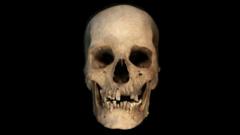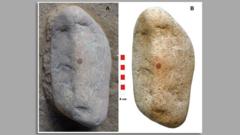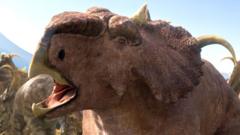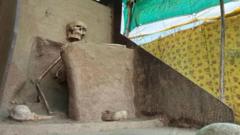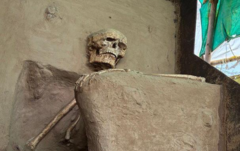Recent research on a mass grave at Charterhouse Warren Farm indicates that 37 individuals—men, women, and children—were likely killed and then consumed, shedding light on a previously unrecognized aspect of Bronze Age society.
Bronze Age Mass Grave Reveals Shocking Evidence of Cannibalism

Bronze Age Mass Grave Reveals Shocking Evidence of Cannibalism
A groundbreaking study uncovers that victims in a prehistoric mass grave in England may have been consumed after being slaughtered, challenging historical perceptions.
The bones recovered from Charterhouse Warren in southwest England have long fascinated archaeologists, revealing a dark chapter from the Bronze Age. The discovery of numerous human remains scattered over a 50-foot ditch presented a puzzle that researchers have now cracked, uncovering evidence indicating that over 37 individuals suffered a horrific fate, possibly as part of a ceremonial act.
The initial findings, made by cavers in 1970, documented bone fragments but did not detail the violent circumstances surrounding the death of these prehistoric people, believed to have died between 2210 and 2010 B.C. Marks on their bones suggest blunt force trauma and deliberate cuts, indicating they were not only killed but also possibly butchered and consumed.
Professor Rick Schulting from Oxford University, who spearheaded the recent analysis published in the journal Antiquity, described the revelation as “completely unexpected” and “totally atypical” for the era in question. The findings push boundaries of what is known about social practices during the Bronze Age, prompting further investigation into the cultural and ceremonial practices of ancient communities in Britain.
The Charterhouse Warren site, once overlooked by archaeologists, is now a focal point for understanding the violent and ritualistic aspects of life during that historical period. The presence of animal skeletons alongside human remains adds a layer of complexity, suggesting that the site may have been a location for both hunting and ritualistic activities.
As scholars digest these findings, they are challenged to re-examine existing narratives about prehistoric societies in Britain and the social structures that may have governed them. The research opens new avenues for understanding cannibalism and its potential role in ancient rituals and societal dynamics.
The initial findings, made by cavers in 1970, documented bone fragments but did not detail the violent circumstances surrounding the death of these prehistoric people, believed to have died between 2210 and 2010 B.C. Marks on their bones suggest blunt force trauma and deliberate cuts, indicating they were not only killed but also possibly butchered and consumed.
Professor Rick Schulting from Oxford University, who spearheaded the recent analysis published in the journal Antiquity, described the revelation as “completely unexpected” and “totally atypical” for the era in question. The findings push boundaries of what is known about social practices during the Bronze Age, prompting further investigation into the cultural and ceremonial practices of ancient communities in Britain.
The Charterhouse Warren site, once overlooked by archaeologists, is now a focal point for understanding the violent and ritualistic aspects of life during that historical period. The presence of animal skeletons alongside human remains adds a layer of complexity, suggesting that the site may have been a location for both hunting and ritualistic activities.
As scholars digest these findings, they are challenged to re-examine existing narratives about prehistoric societies in Britain and the social structures that may have governed them. The research opens new avenues for understanding cannibalism and its potential role in ancient rituals and societal dynamics.

